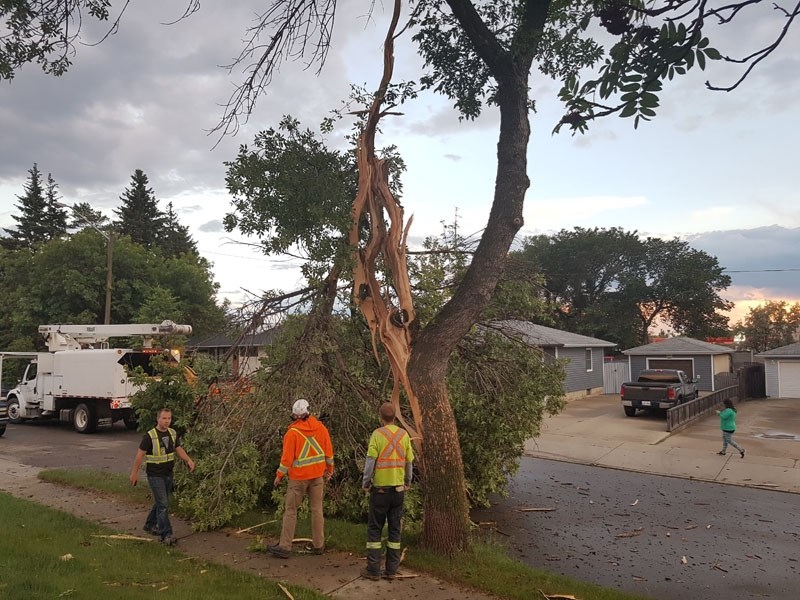Lightning struck close to home for St. Albert resident Randy Kay this week.
On Wednesday, Kay was spending a regular stormy evening in his home when he was disturbed by a loud ‘bang!’
He says he was gazing out his back window when the action happened so he was unable to identify where the noise came from at first. A neighbour from across the street called to alert him that the shocking sound was in fact lightning striking a tree in front of Kay’s home.
Wednesday night’s thunder and lightning show wasn’t the only storm to roll through St. Albert this week as the summer storm season gets underway.
Thunderstorms occupied the skies above St. Albert on Thursday night too, with more lightning occurrences during the first storm according to Environment Canada spokesperson Dan Kulak. The storms are not out of the ordinary for the season though.
“We get thunderstorms probably every third day or so beginning from late June into that latter part of July on average,” said Kulak. “This is kind of typical summer weather.”
St. Albert could possibly reclaim its lightning hot spot title this year, after falling down the list in 2014.
The city topped the list of local lightning hot spots back in 2013 with 2.29 strikes per square kilometre and 1,775 strikes in total.
Last year the city had a less severe storm season with only 670 strikes (1.088 strikes per square kilometre) said FortisAlberta spokesperson Kevin Haslbeck. The city only experienced 11 power outages.
Those numbers could spike right back up if the rest of the summer continues like the past week.
Fellow Edmonton region municipalities Fort Saskatchewan and Sherwood Park were included in the top 10 of FortisAlberta’s lightning hotspots for 2015. Fort Saskatchewan was fourth with 2.03 strikes per square kilometre and Sherwood Park sits in seventh place with 1.65 strikes per square kilometre.
Haslbeck says the list changes yearly but the storms are usually more heavily concentrated east of the foothills.
Halsbeck advises people to take precautions during storm season.
“When you can count 30 seconds between lightning strikes you know it’s time to get indoors if at all possible. Being indoors is the safest place to be,” he says.
If trapped outside, he says to avoid bodies of water (including puddles), and tall objects such as trees, hilltops, poles and playgrounds.
“Just try to make yourself the lowest object in the area by crouching down and staying in that position until the lightning passes.”
According to the Environment Canada website, the inside of a car is much safer than outside when lightning flashes. The metal body of the car will redirect lightning into the ground, keeping passengers safe.
“Lightning is actually the greatest summer threat that we have from the storms,” says Kulak. “It only takes one lightning strike to injure or kill a person and we have about 300,000 lightning strikes in the province per year. We become too used to these events and we don’t take action soon enough.”
Environment Canada says only five per cent of lightning-related deaths are from direct strikes. Sixty to 80 per cent of the deaths are actually from ground current and side flash.
FortisAlberta expects the lightning season to last through the summer months and end in September.
Visit www.ec.gc.ca/foudre-lightning/ for more information.




